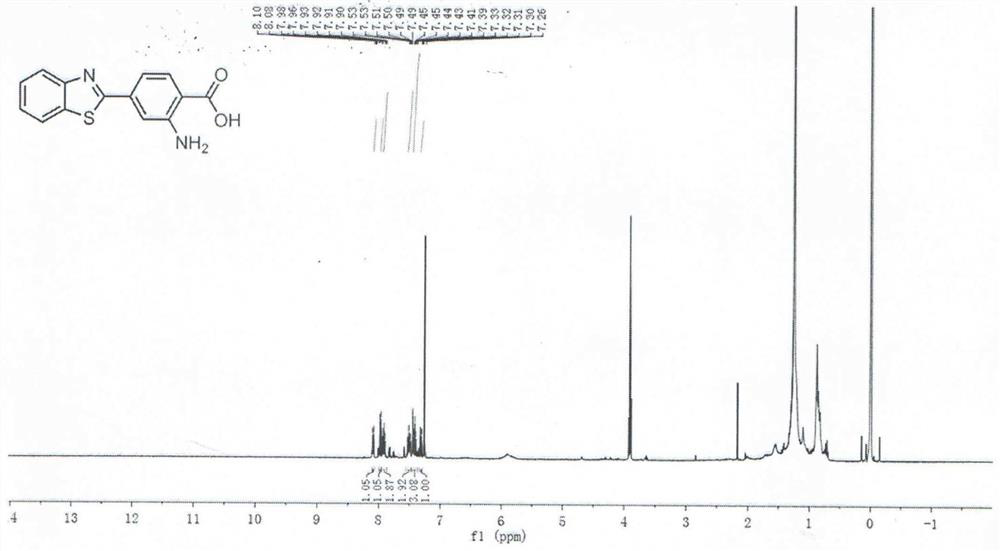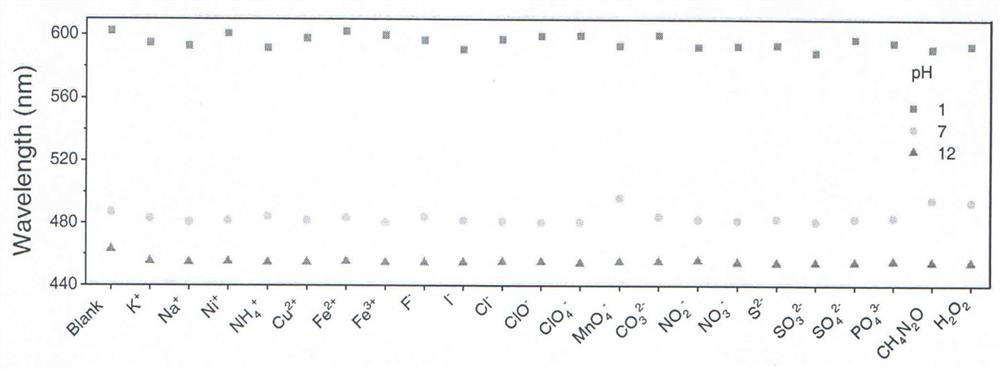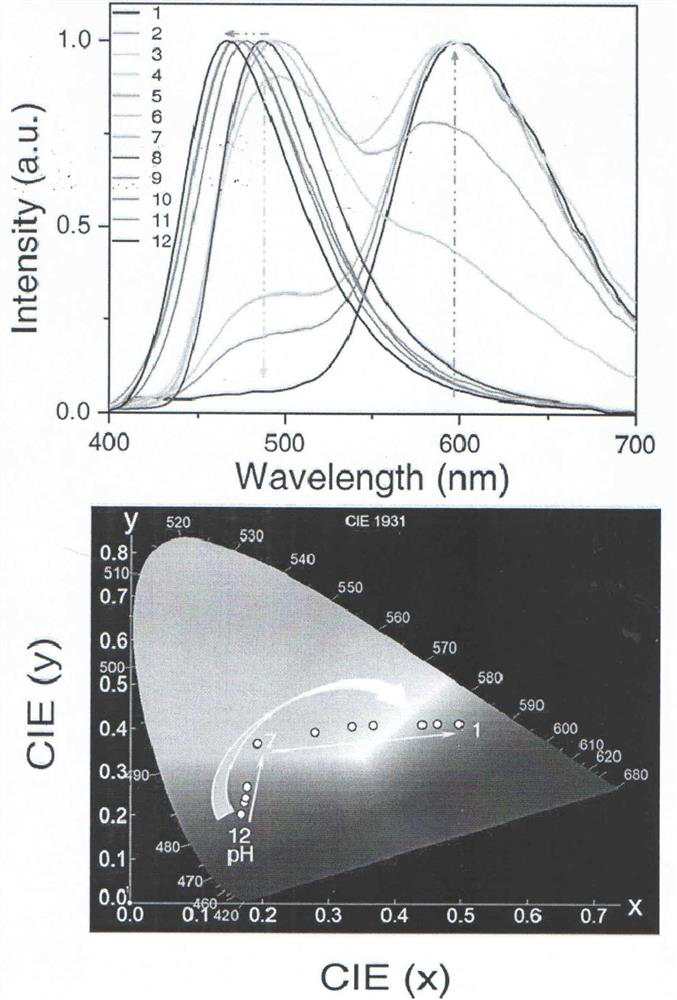A kind of is used for detecting pH fluorescent probe molecule and preparation method thereof
A fluorescent probe and molecule technology, applied in the field of fluorescent probe molecules and their preparation, achieves the effects of good specificity, excellent application prospects and fast detection speed
- Summary
- Abstract
- Description
- Claims
- Application Information
AI Technical Summary
Problems solved by technology
Method used
Image
Examples
Embodiment 1
[0037] Synthesis of fluorescent probe molecule 2-(3-amino-4-carboxyphenyl)benzothiazole:
[0038] a. 4mmol of 2-amino-terephthalic acid, 0.725g, 4mmol of 2-aminobenzenethiol, 0.5g, 4.8mmol of triphenyl phosphite, 1.489g and 4.8mmol of tetrabutylammonium bromide, 1.163g Add it to a 50mL three-neck round bottom flask, stir evenly, slowly heat to a temperature of 120°C, reflux for 12 hours, and stop the reaction;
[0039] b. After the reaction is cooled to room temperature, add 120 mL of a mixed solvent of methanol and deionized water at a volume ratio of 1:1, filter out the precipitate, and dry to obtain a crude product;
[0040] c. Purify the crude product obtained in step b through forward silica gel chromatography, eluting with petroleum ether and ethyl acetate at a volume ratio of 1:1, and then drying the eluted product to obtain Fluorescent probe molecule 2-(3-amino-4-carboxyphenyl)benzothiazole in yellow solid to detect pH;
[0041] figure 1 It is the NMR data of the pr...
Embodiment 2
[0044] Synthesis of fluorescent probe molecule 2-(2-amino-3-carboxyphenyl)benzothiazole:
[0045] a. 4mmol of 2-amino-isophthalic acid, 0.725g, 4mmol of 2-aminobenzenethiol, 0.5g, 4.8mmol of triphenyl phosphite, 1.489g and 4.8mmol of tetrabutylammonium bromide, 1.163g Add to a 50mL three-neck round bottom flask, stir evenly, slowly heat to a temperature of 100°C, reflux for 6 hours, and stop the reaction;
[0046] b. After the reaction is cooled to room temperature, add 120 mL of a mixed solvent of methanol and deionized water at a volume ratio of 1:1, filter out the precipitate, and dry to obtain a crude product;
[0047] c. Purify the crude product obtained in step b through forward silica gel chromatography, eluting with petroleum ether and ethyl acetate at a volume ratio of 1:1, and then drying the eluted product to obtain Fluorescent probe molecule 2-(2-amino-3-carboxyphenyl)benzothiazole in yellow solid for pH detection.
Embodiment 3
[0049] Synthesis of fluorescent probe molecule 2-(4-amino-3-carboxyphenyl)benzothiazole:
[0050] a. 4mmol of 4-amino-isophthalic acid, 0.725g, 4mmol of 2-aminobenzenethiol, 0.5g, 4.8mmol of triphenyl phosphite, 1.489g and 4.8mmol of tetrabutylammonium bromide, 1.163g Add to a 50mL three-neck round bottom flask, stir evenly, slowly heat to a temperature of 100°C, reflux for 6 hours, and stop the reaction;
[0051] b. After the reaction is cooled to room temperature, add 120 mL of a mixed solvent of methanol and deionized water at a volume ratio of 1:1, filter out the precipitate, and dry to obtain a crude product;
[0052] c. Purify the crude product obtained in step b through forward silica gel chromatography, eluting with petroleum ether and ethyl acetate at a volume ratio of 1:1, and then drying the eluted product to obtain Fluorescent probe molecule 2-(4-amino-3-carboxyphenyl)benzothiazole in yellow solid for pH detection.
PUM
| Property | Measurement | Unit |
|---|---|---|
| wavelength | aaaaa | aaaaa |
Abstract
Description
Claims
Application Information
 Login to View More
Login to View More - R&D
- Intellectual Property
- Life Sciences
- Materials
- Tech Scout
- Unparalleled Data Quality
- Higher Quality Content
- 60% Fewer Hallucinations
Browse by: Latest US Patents, China's latest patents, Technical Efficacy Thesaurus, Application Domain, Technology Topic, Popular Technical Reports.
© 2025 PatSnap. All rights reserved.Legal|Privacy policy|Modern Slavery Act Transparency Statement|Sitemap|About US| Contact US: help@patsnap.com



